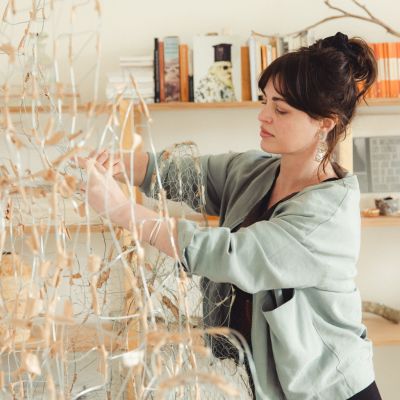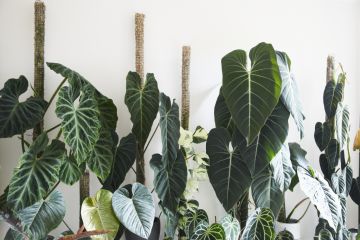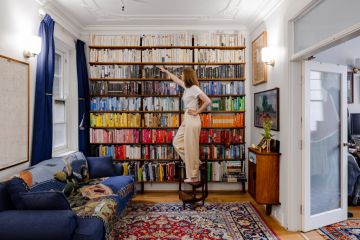From city to country: How Jason Chongue built a plant-filled paradise
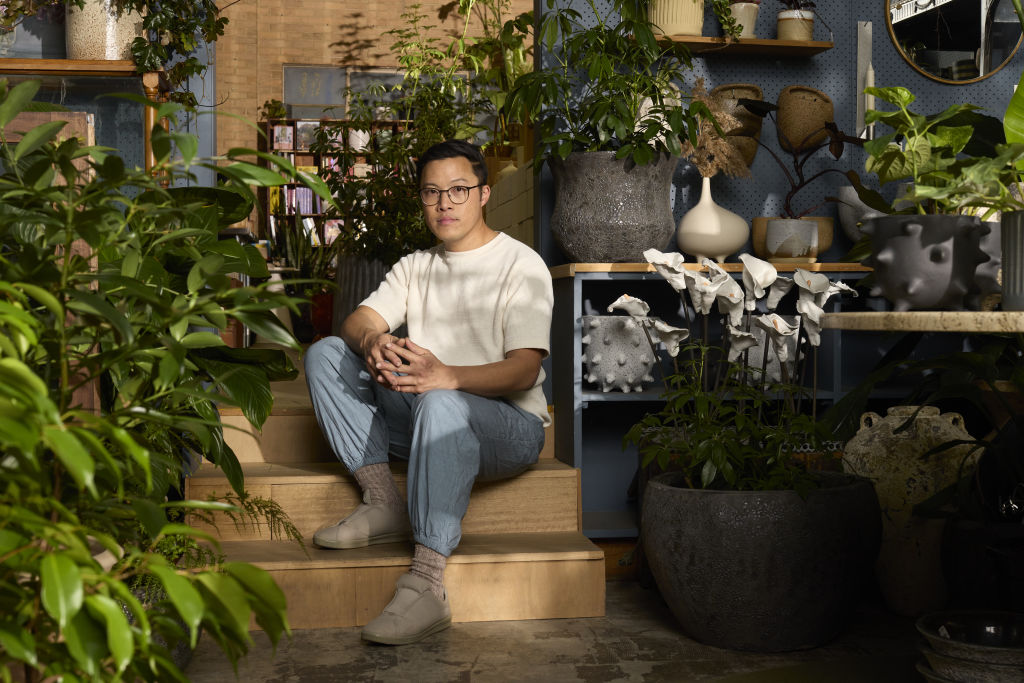
When Jason Chongue and his partner Nathan Smith were looking to move from Melbourne to rural Victoria, they weren’t particularly fussed about the area or the town. The house and landscape weren’t top priority either. “We were just set on the rainfall,” Chongue says.
After checking out plenty of locations, the couple ended up on five acres in Newlyn North, just outside Daylesford. “It’s very wet all year round,” Chongue tells Broadsheet. “I always say that when you create a garden, it should suit your lifestyle. I wanted to move to the country, but didn’t want to spend hours watering – and also that’s not sustainable. I plant according to the climate, and had a specific garden in mind in terms of something quite green. I’m not a cacti garden kind of guy.”
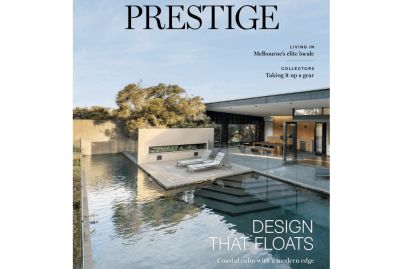

Chongue’s garden-first approach to real estate shouldn’t be surprising – as co-founder of The Plant Society, alongside Smith, he spends his life incorporating plants into built spaces and creating just the right greenery for householder and commercial clients.
His work is pragmatic as much as it is aesthetic. “For instance, when someone with children says, ‘I want this, this and this,’ I’ll be the first to say, ‘Realistically, are you going to have time to nurture all that as well as look after your kids?’ Probably not, and it’s okay not to have your perfect house now,” he says. “We’ll do something different that challenges their thinking, but gives them their own individual take as well.”
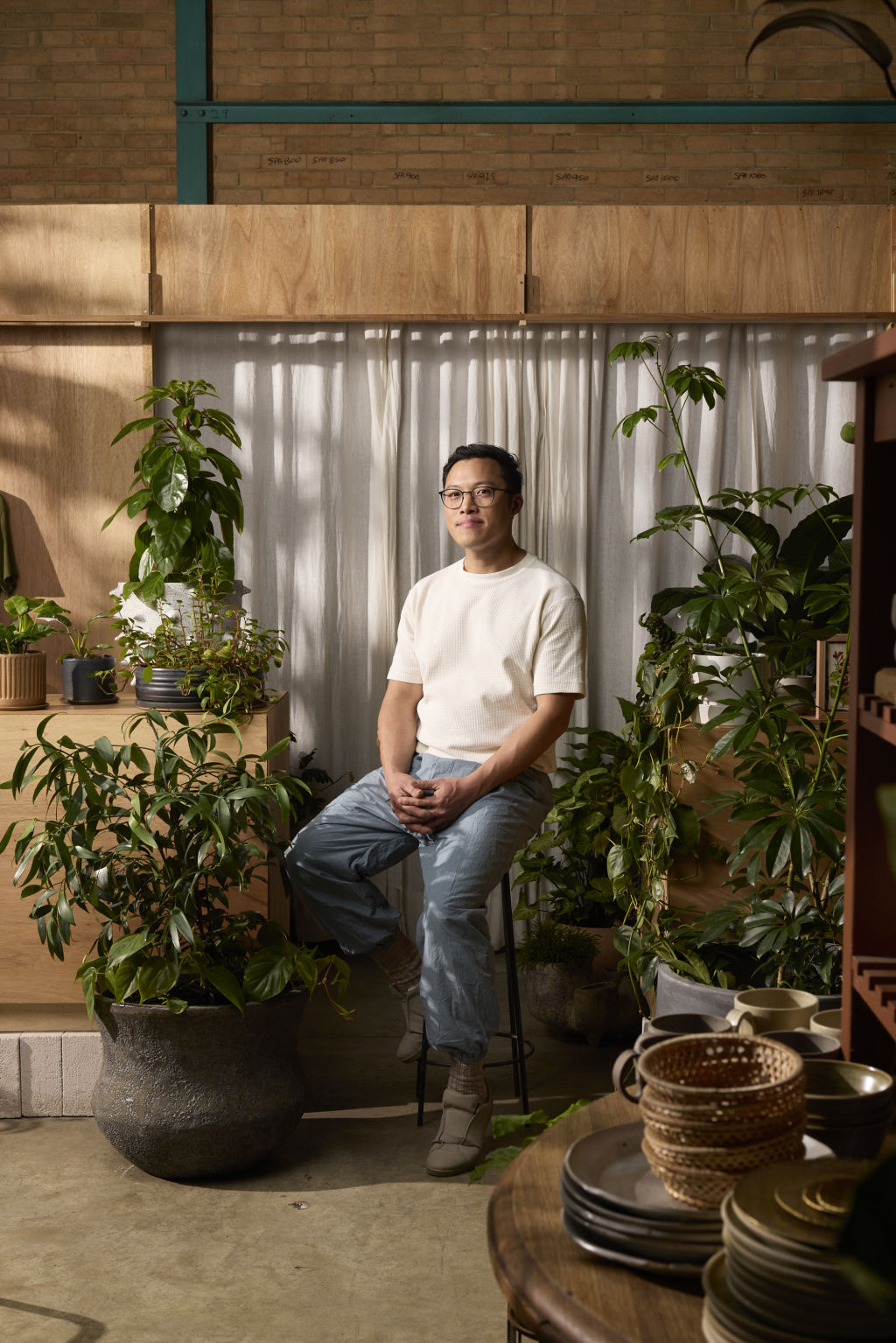
Chongue’s work is often the “last little bit that ties everything together,” he says. “There might be a garden that’s been designed by landscape architects – we’ll take part of that and pull it indoors. Or we look at what the interior designer or residents have done inside, and try to bring a bit of that colour outside through the planters, for instance.
“It’s almost just stopping and listening and seeing how the house works. Our philosophy is to capture [the personality of] who lives there, and to soften the spaces with gardens, whether that’s a potted garden, indoor garden or balcony.”
The Plant Society’s client list boasts prominent commercial names like Hecker Guthrie, Elenberg Fraser and Mercedes. Recent jobs include interior planting at the new StandardX hotel in Melbourne, and installations for cult beauty brand Aesop across Melbourne, Sydney, Brisbane and Canberra.
“There’s a bit of randomness to how StandardX approach their interiors in that there’s meant to be a sense of surprise, so we have some really unusual combinations of planting. We’ve got spider plants in there – no one else wants to touch them, so it’s making the daggy cool again. There are definitely lots of textural clashes in that space on purpose,” he says.
The Aesop project, on the other hand, is “experimental installation work – there for seven weeks, changing the way people move through the shop and interact with the plants.”

Greenery has been part of Chongue’s life since he was a little boy. “I grew up gardening with my parents and grandparents – they’re from East Timor and we’re a farming family. My aunties would give me cuttings of things like begonias and zygocactus, and we’d just swap plants.” At primary school, he got along well with the gardener, who would teach him things at lunch. “I think it was a bit of an escape for me, and I naturally grew up with a love for it.”
Chongue trained as an architect and worked in the industry for seven years, starting out on masterplans and large apartment blocks. “I didn’t really love that,” he admits. He moved into retail and hospitality, and eventually specialised in interiors, using plants as a starting point in all his projects.
Chongue’s architecture background translates “in a unique way” into the work he does through The Plant Society. “We understand spaces,” he says. “I’m always looking at natural light and small spaces. In my new book, The Plant Society Design Handbook, we talk about textures and tones, which is very design-based, and carry that into the horticulture realm.
“People always think gardeners don’t design – sometimes, as a gardener, it can be a bit haphazard, but having a design background has allowed me to look at gardens and plants from both angles.”
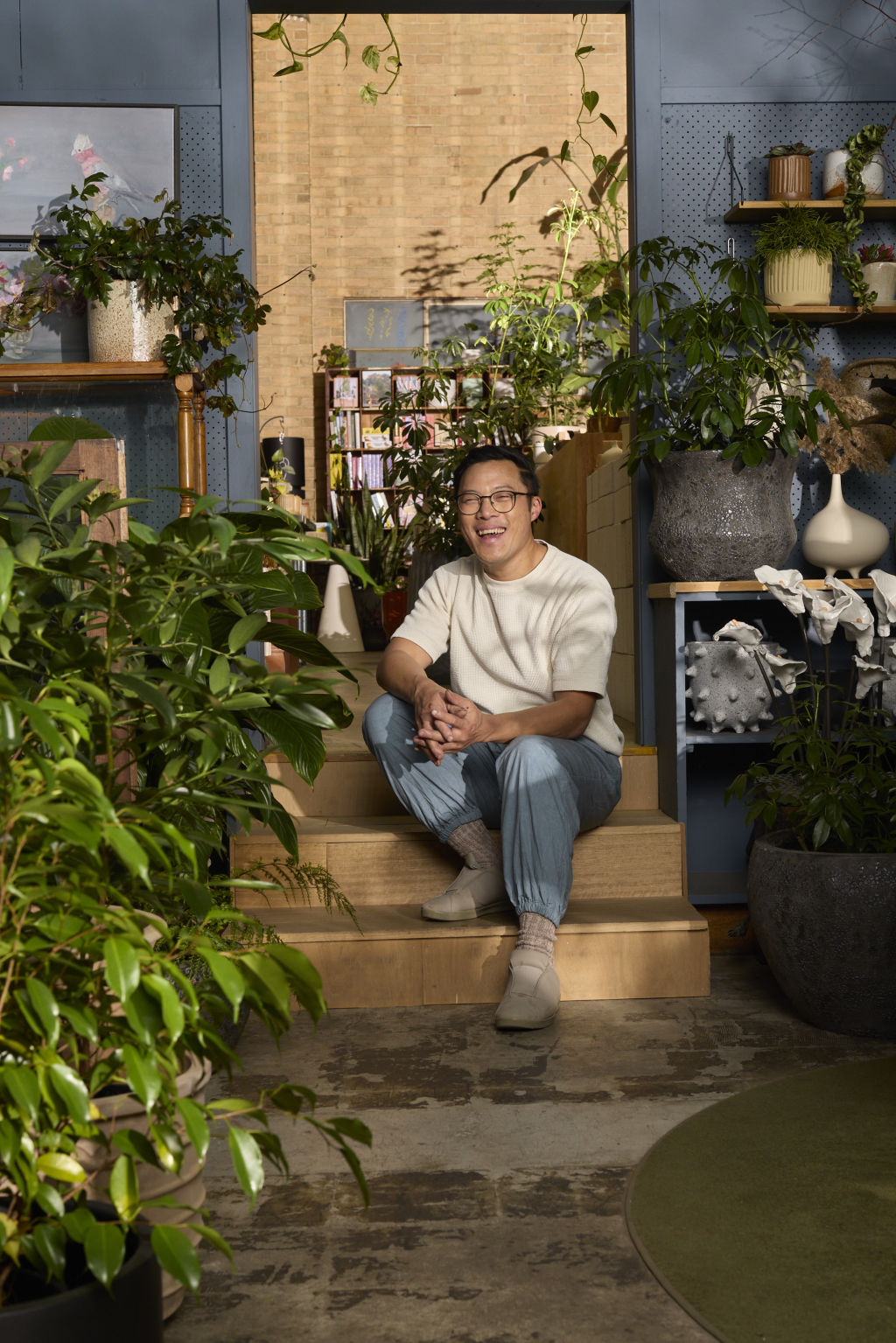
It’s from architecture and interiors, too, that he gets much of his inspiration. “Looking at colours used in those fields, as well as how artists use paint and merge colours … I also think about photographers and how they frame and capture light. I kind of look at plants as my palette.”
The Plant Society had its genesis while Chongue was still working on buildings. “For me, there is a social aspect to architecture, but there’s also a Devil Wears Prada side to it as well – you have to be high-end and have to be wearing the nicest things. I kind of missed the vulnerability side.”
Craving something a bit more organic, Chongue tried to join gardening clubs, but found that most of their meetings were on weekday mornings – and most of the participants were way outside his demographic. So he and Smith, a flight attendant at the time, started The Plant Society as a way of meeting like-minded folk.
“We’d do it on a weekend at the back of cafes, and would find all these places that would let us be there – there was no pressure, it was just a little club. It was mainly people our own age who lived in apartments, who maybe didn’t have a grandma to ask all their plant questions to.”
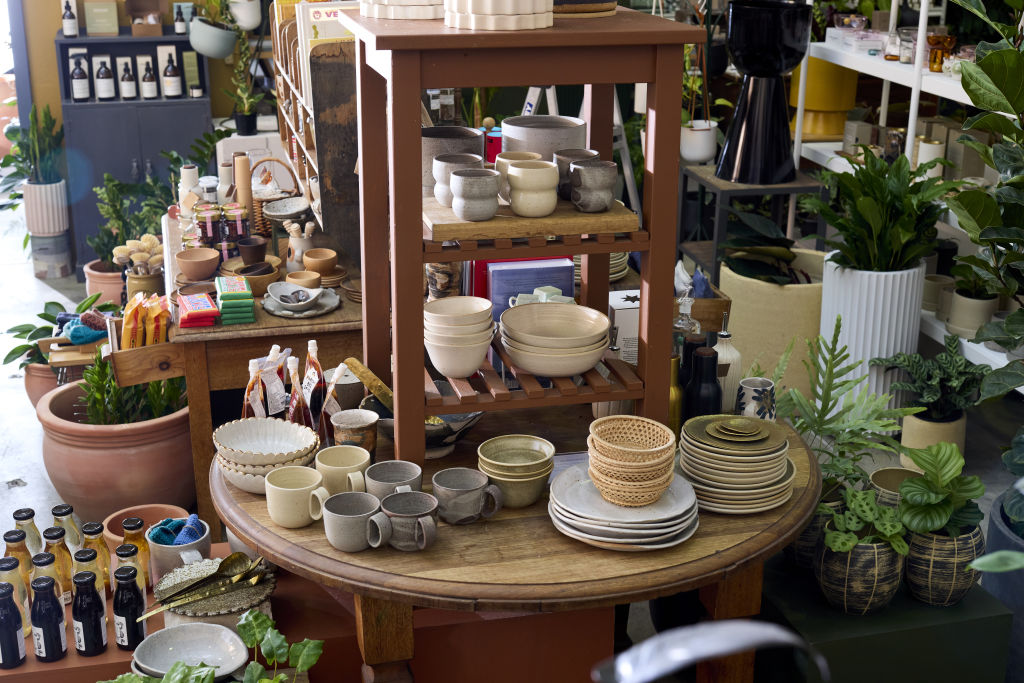
Within a few weeks, people were asking if they could buy plants from the couple. “We worked out where to source rare plants and unusual things, or things we loved. That kept growing and before we knew it, we had a little terrace full of plants in the corridor.”
The duo started pop-up shops in the backs of cafes, “but eventually decided it wasn’t healthy for us lugging plants back home, and it also wasn’t great having to climb over plants in the living room all the time.” That’s when they approached Collingwood cafe Cibi to sublease part of their space as a very leafy shopfront. Last year they outgrew even that and set up their own store and studio nearby, out of which they now sell garden paraphernalia and homewares, and work on projects together.
They also run a store in Tokyo after trialling a pop-up there a few years ago. “I love the types of plants they have there and how they nurture them,” Chongue says. “It’s very different to a Western country – if something’s growing lopsided, they’ll let it grow lopsided, whereas here we’ve already staked it before we can take a breath … That really inspires what we do here – that need to not make things so perfect.”
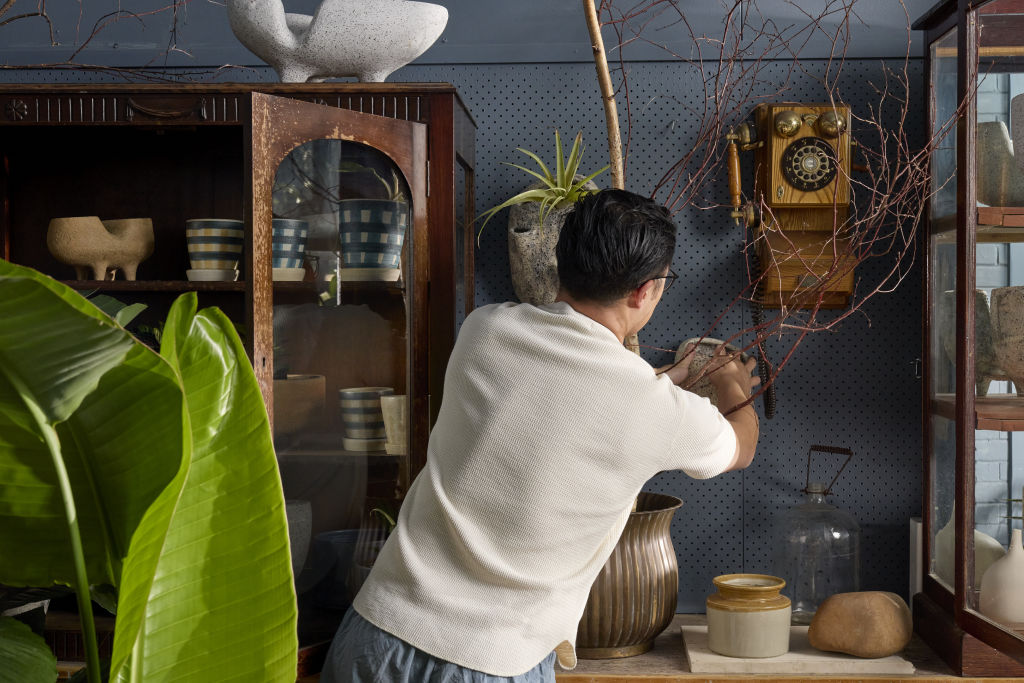
In the same way, it’s through gardening he understands that making mistakes is a normal part of life. “If a gardener says to me they’ve never killed a plant, I’m highly sceptical.” The last time Chongue killed anything? “Last week. It was an avocado – my philosophy in life is to give something a go a few times and to know when to call it quits. I’ve tried a few times with the avocado because my dream about moving to the country was to have a giant avocado tree, but I don’t think that’s ever going to happen, and that’s fine.”
Jason Chongue’s tips for designing with plants
Lighting is the first step
“Don’t be in denial about the natural light you have, because you want plants that thrive. There’s no point putting in plants that won’t work.”
Look at what’s around you
“The next thing I always approach is what interior – or exterior – aesthetics are already in the space. Catalogue the materials, which might be red brick or a nice wallpaper or colour on the wall you want to keep, and scrapbook those elements.”
Be inspired
“Along with what’s around you, scrapbook images of interiors and exterior architecture that inspire you, and then think about how to roll out your individual take on those. Shortlist plants that will work in the space – if you don’t know the plant types and conditions they need, shortlist plants in general and run through that list later with a fine tooth comb.”
Be patient
“Don’t rush things, and don’t feel you need to control everything, because you can’t. There’s something quite grounding about gardening.”
You don’t have to finish your garden
“This is my biggest tip. People want instant gardens or the exact pot they saw on Instagram by a famous artist, and that’s not going to happen. It’s about being realistic and finding the next best thing. Or they know exactly what to do in their living room, but have no idea what to do on their balcony, so feel paralysed and don’t even start. It’s about working in vignettes – breaking up the space so you feel it’s more manageable.”
This article first appeared in Domain Review, in partnership with Broadsheet.
We recommend
States
Capital Cities
Capital Cities - Rentals
Popular Areas
Allhomes
More
- © 2025, CoStar Group Inc.
